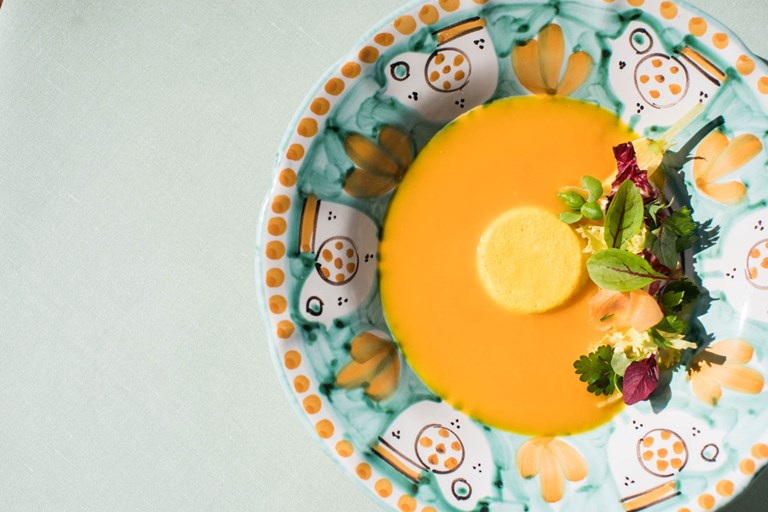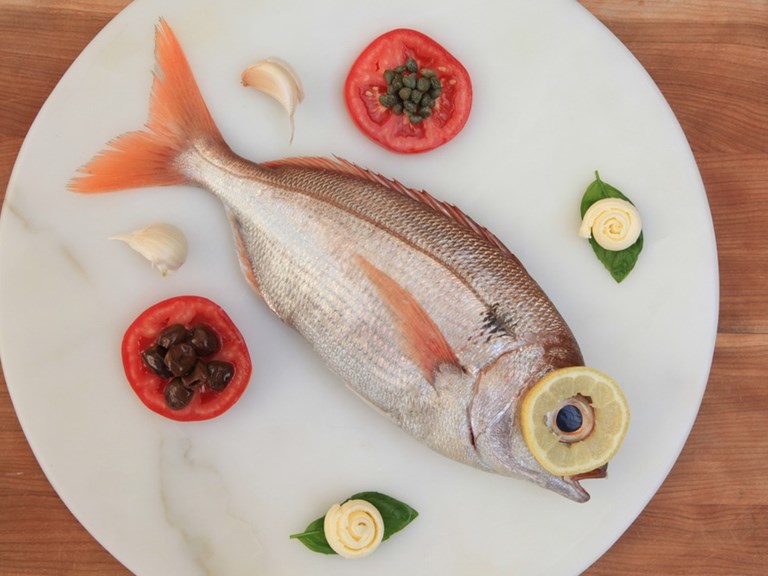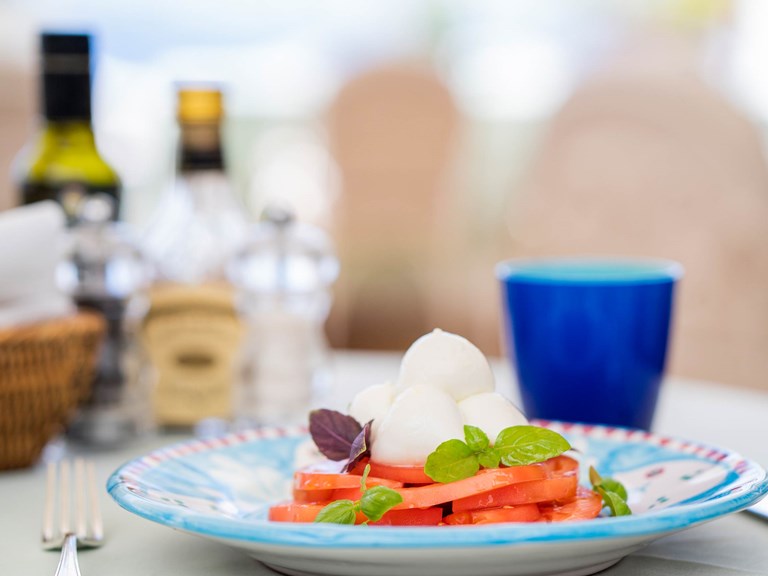TWO AUTUMN RECIPES
25.11.2020 RECIPES
Italy, these ingredients are as much a part of the country’s rural traditions as they are Stateside, but the star turn of the autumn harvest is undoubtedly this year’s just-pressed olive oil – grassy, sapid, tangy, best tasted drizzled onto the bruschettas that are routinely offered round as courtesy gestures in Tuscan or Umbrian oil presses, where pickers wait patiently, often late into the night, for their olives to be transformed into the precious green gold.
In honour of the season when America gives thanks, while the whole world looks forward to a time, perhaps not too far off, when we can be truly thankful for deliverance from the current global health emergency, we’ve asked Le Sirenuse’s chef Gennaro Russo to suggest two recipes that distill the spirit of l’autunno in Positano. Both are easily prepared at home with ingredients that can be found locally – though depending on where you live, sourcing fresh funghi porcini can, we’ll admit, be a challenge.
Tagliolini with funghi porcini
Ingredients
to serve four
- 400g (14oz) fresh tagliolini pasta
- 400g (14oz) fresh porcini mushrooms or 150g (50z) dried
- 2 cloves of garlic
- The leaves from a few sprigs of thyme
- Salt, pepper and olive oil
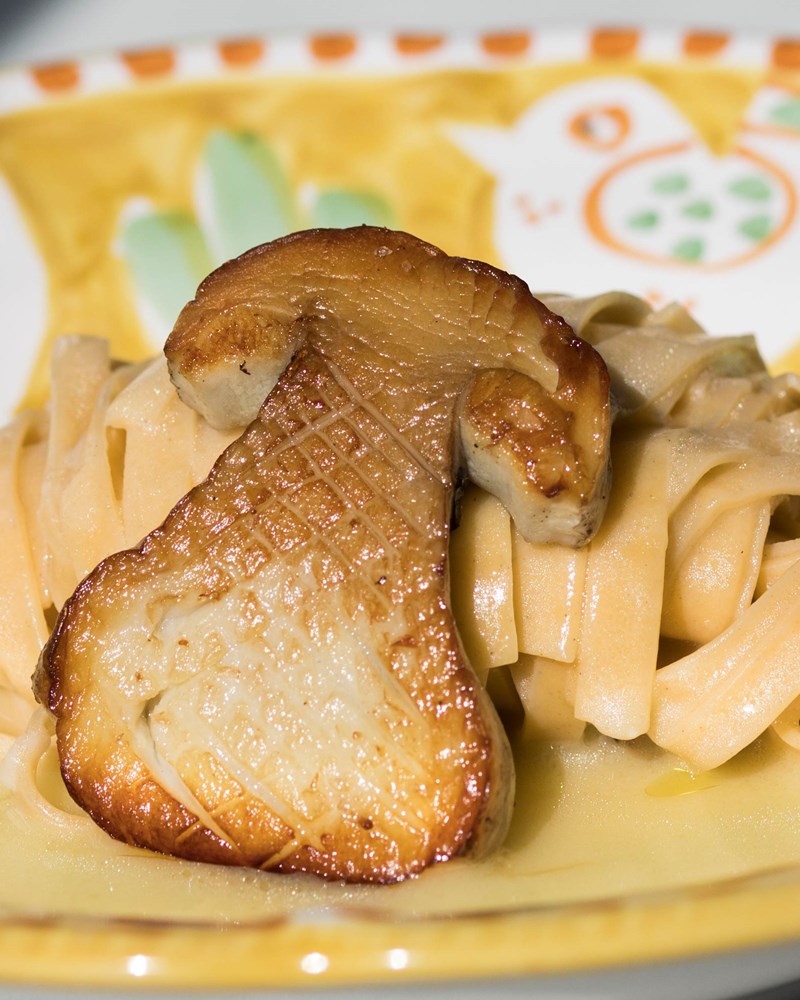
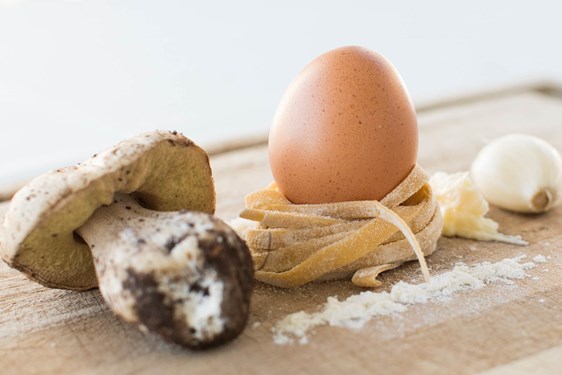
View
The first thing to decide is: do I make the pasta myself, or do I go out and buy it? We’ll leave you to make that call. Either way, we recommend good fresh pasta all’uovo, or egg-based pasta. Tagliolini are long, thin pasta strips that are popular both in the south of Italy and in Piedmont, where they are known as tajarin. They’re the same length as spaghetti, and about half the width of tagliatelle.
Having procured your tagliolini, turn your attention to the funghi porcini. If you were lucky enough to find fresh ones, don’t, whatever you do, let them anywhere near water, which they absorb like a sponge. First, set aside one especially fine specimen, then separate the stalk and cap of the others. The muddy base should be cut off and any earth or plant debris on the stalk gently scraped off with a knife, which you can also use on the cap – though real purists will of course have a specially designed mushroom brush for this purpose. Once they’re clean, or near enough, dice the porcini into small cubes of 5mm or so. Cut the mushroom you kept aside into slices around half an inch thick (aim for one per person), and keep separate.
If you’re using dried porcini, which generally come in thin slices, pour hot water over them around half an hour before you plan to use them. Then, keeping aside the water, which makes great vegetable stock, chop them up as above, bearing in mind that you may not be able to achieve perfect cubes owing to the thin cut of the mushrooms.
In a heavy bottomed frying pan large enough to contain the pasta too, heat up a slug of good olive oil (at least two tablespoonfuls), throw in the two unpeeled garlic cloves, add the diced mushrooms, sprinkle in the thyme, season to taste, and fry on a medium heat for eight minutes or so until the porcini take on a golden tinge. At the same time, fry the four or more porcini slices you kept aside until they’re golden on each side.
The pasta cooking time depends on whether you’re using fresh or dried tagliolini. In the former case, three to four minutes should be ample. When the tagliolini are almost ready, but still al dente, keep aside a cup of the cooking water, then drain the pasta. Throw the drained pasta into the pan with the mushrooms, alongside a small knob of butter – which Gennaro uses to give a creaminess to the sauce, as fresh pasta is low in starch. Stir to amalgamate, on a low to medium heat, for another minute, then serve, coiled on each guest’s plate, topped with one each of the fried mushroom slices you kept aside earlier.
Pumpkin flan soup
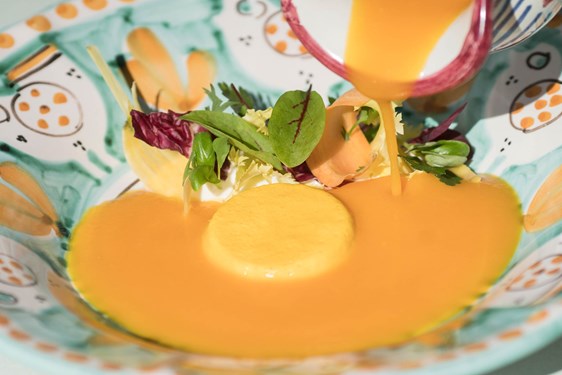
View
Ingredients
to serve four
- 2kg (4lb 8oz) pumpkin, peeled, deseeded and chopped
- 4 small onions, finely chopped
- 700ml (3 cups) good vegetable stock
- 45g (1.5 oz) single cream
- 3 egg yolks
- Baby salad leaves for garnish
- 80ml (1/3 cup) olive oil
Optional: 400g (15oz) burrata, stracchino or other ‘runny’ cheese
Essential equipment: custard cups or silicon mini-flan moulds
This warming autumn soup has a surprise at its centre – a flan disc made from the same ingredients as the soup itself. When he makes it at Le Sirenuse’s La Sponda restaurant, Gennaro Russo also adds a slick of burrata – a Puglian cheese that might be described as ‘runny mozzarella’ – to the side of each plate before pouring the soup on top, then garnishes with misticanza, or small mixed salad leaves.
To make the soup and flan, chop the onions finely and fry them gently in the olive oil, adding in the pumpkin chopped into chunks of around half an inch to an inch. Let the pumpkin sweat for a while, then add the vegetable stock, raise the heat slightly, and simmer for 20 minutes. Then blitz everything in a blender and pass through a fine-meshed sieve or chinois.
Remove 120g (4oz) of the liquid that results, add this to the three beaten egg yolks and the cream, stir well to amalgamate, and pour into four separate custard cups or silicon mini-flan moulds around 6 or 7cm (2-3 inches) in diameter. You will probably not want to fill these completely as you’re aiming for thinnish pumpkin flan discs that are entirely covered by the soup – so they should be no more than 2cm (just under an inch) high.
At this point, you’ll need to cook the flans as you would baked custard or crème caramel. So you can either bake the cups in a bain marie in an oven set at 180°C (350°C) for 45 minutes, or save time by cooking them in a bamboo steamer or pan steamer – which should take around 15 minutes (you’re aiming for a jelly-like consistency – if the surface of the flan still looks liquid, pop it back in the steamer for another five minutes).
Five minutes before the flans are ready, heat up the rest of the pumpkin and onion purée. Then place one mini-flan in the centre of each bowl, arrange a slick of burrata or other very runny cheese on the side if you opt to take that route, and pour the soup on top, garnishing with the baby salad leaves.
Photos © Roberto Salomone
Le Sirenuse Newsletter
Stay up to date
Sign up to our newsletter for regular updates on Amalfi Coast stories, events, recipes and glorious sunsets
